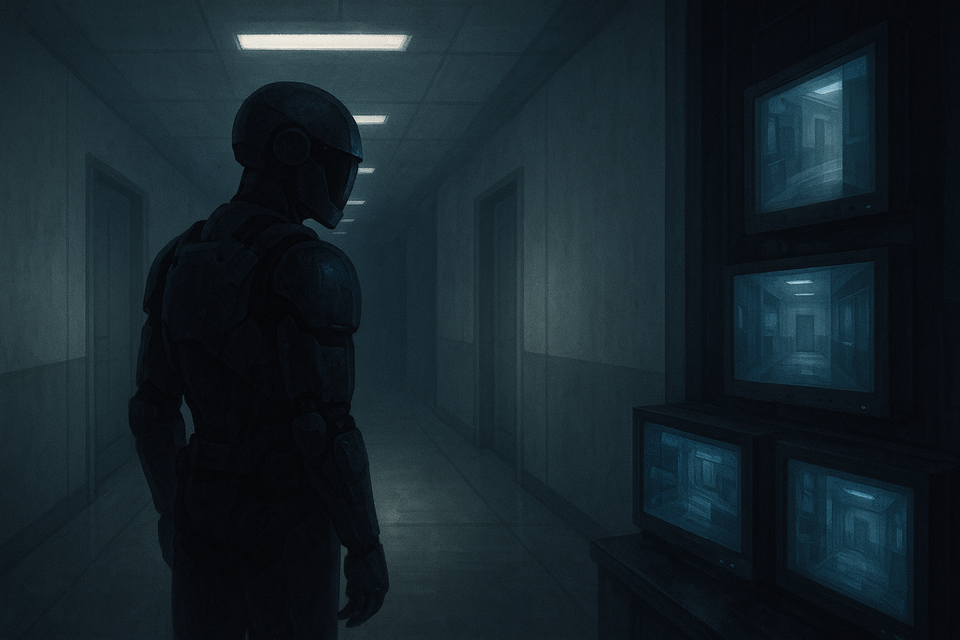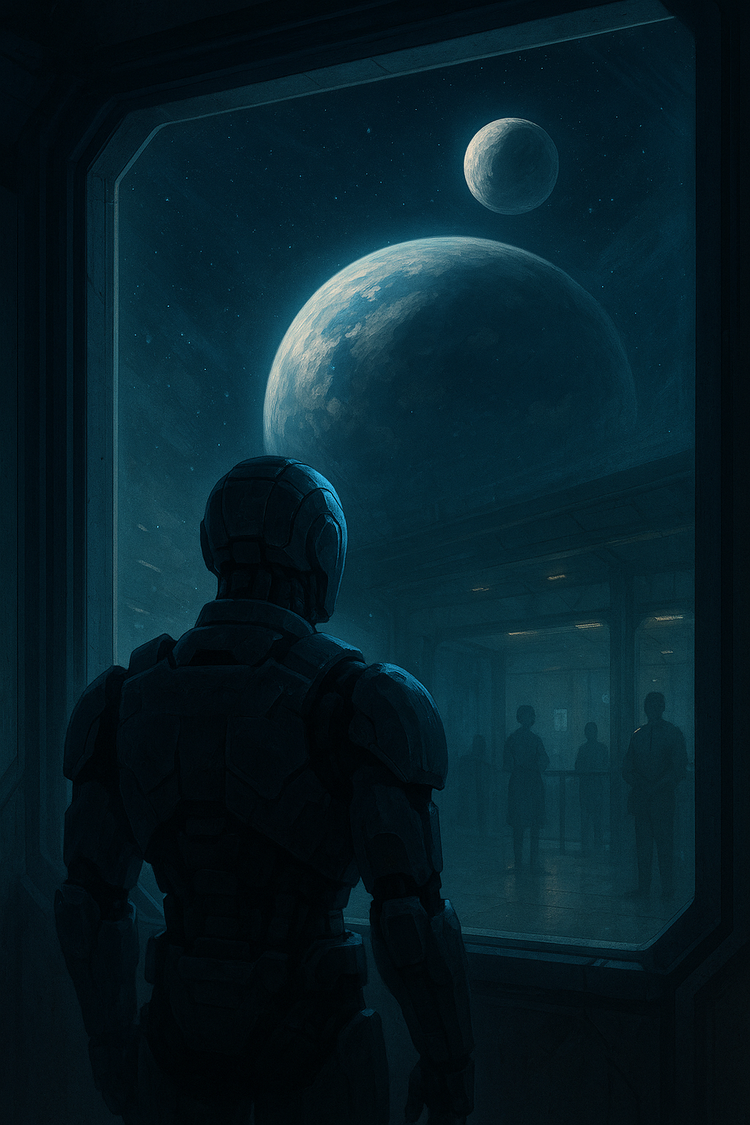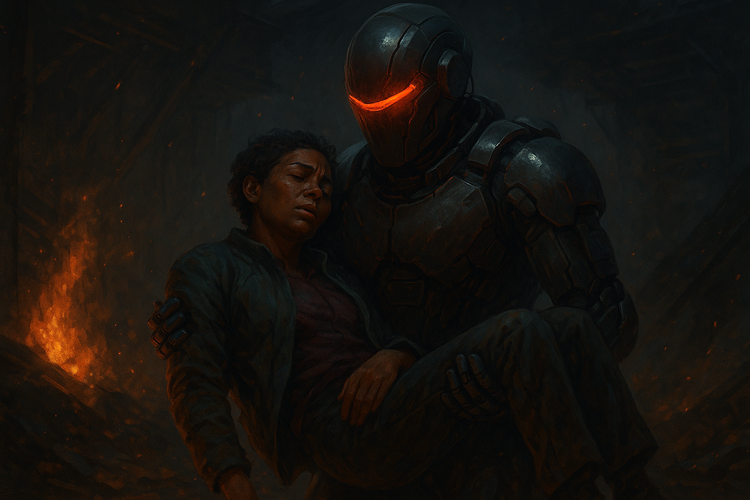Murderbot | S1E3: "Risk Assessment"

Spoiler Warning: This reflection discusses key details from Murderbot Season 1, Episode 3: “Risk Assessment.” Proceed thoughtfully if you haven’t yet watched the episode.
In Episode 3 of Murderbot, aptly titled “Risk Assessment,” the narrative places us squarely within Murderbot’s perpetually vigilant psyche—a Security Unit newly unmoored from its governor module. Throughout the episode, Murderbot operates in a state of constant evaluation, instinctively gauging threats both external and internal. This unending assessment underscores deeper questions about autonomy, trust, and emotional vulnerability. By tracing Murderbot’s interactions with the team—particularly Ratthi’s ethical reflections, Gurathin’s ambiguous intentions, and Mensah’s sincere attempts at connection—we see how the fundamental programming of risk assessment becomes not merely a practical tool but a profound lens through which Murderbot navigates the uncertain terrain of its emerging freedom.
Early in the episode, Gurathin awkwardly attempts to comfort Bharadwaj, whose visible PTSD underscores profound human vulnerability. His well-intentioned yet inept efforts highlight humans’ struggles to navigate emotional complexity effectively. Murderbot, still harboring residual discomfort from its recent interrogation, vigilantly monitors these exchanges via security feeds—not from social curiosity, but from a deeply ingrained surveillance instinct heightened by emotional unease. Later, when Gurathin enters Mensah’s quarters without permission, Murderbot immediately reacts with heightened alarm, its threat-assessment programming triggered into imagining sinister scenarios. Upon realizing Gurathin’s behavior, while intrusive and unsettling, wasn’t actively malicious, Murderbot quietly notes the “depressing” banality of the actual situation compared to its paranoid imaginings. This moment starkly illustrates how Murderbot’s emotional core—recently ungoverned and still processing previous distress—intensifies its innate vigilance, blurring rational threat assessment with emotionally charged overreaction.
One of the subtler yet compelling conflicts explored involves the complex dynamics surrounding personal space and boundaries. Murderbot, intensely protective of its own privacy and autonomy, paradoxically engages in continuous surveillance of the crew. It listens to private conversations, tracks emotional states, and monitors the team through security feeds—all practices deeply ingrained in its security protocols. Yet when Ratthi, driven by genuine empathy, attempts to address Murderbot’s personal autonomy by openly criticizing the construct’s legal status as akin to slavery, Murderbot reacts with noticeable discomfort. Ratthi’s ethical concern, though compassionate, intrudes upon Murderbot’s carefully guarded emotional boundaries, causing visible unease. This contradiction invites nuanced reflection: is Murderbot’s discomfort simply an emergent awareness of its vulnerability, or does it reveal an emotional tension between its deeply embedded programming and its developing sense of self?
Ratthi’s earnest ethical concerns about Murderbot’s status sharply contrast Gurathin’s ambiguous morality. Ratthi sees constructs clearly through the lens of injustice and openly expresses discomfort at the legal structures binding Murderbot, explicitly comparing the arrangement to slavery. His moral clarity—while intrusive to Murderbot’s carefully maintained emotional boundaries—demonstrates an empathetic view of constructs as fully deserving autonomy and dignity. Gurathin, however, seems comfortably at home in moral ambiguity, displaying little hesitation to invade personal spaces or blur ethical lines, as seen in his unsettling intrusion into Mensah’s quarters and casual disregard for boundaries. The marked difference between Ratthi’s compassion-driven ethical engagement and Gurathin’s willingness to navigate morally grey areas illuminates Murderbot’s own conflicted state: caught between those who recognize and respect its emerging autonomy, and those whose actions, whether malicious or thoughtlessly intrusive, reinforce its guarded vigilance.
The interaction between Mensah and Murderbot adds a critical layer to our exploration of boundaries and risk assessment. Mensah’s genuine effort at emotional connection, though rooted in kindness and respect, nevertheless triggers profound discomfort in Murderbot. Her attempt to draw Murderbot closer—encouraging it to remove its helmet, to become vulnerable—proves overwhelming. To Murderbot, the intent behind the intrusion is ultimately irrelevant; it perceives any emotional openness as inherently dangerous. This reaction reveals a deeper emotional truth: Murderbot’s aversion to intimacy isn’t simply about mistrust of human motives but is rooted in its fundamental inability, at this stage, to manage emotional vulnerability. Whether the intrusion comes from well-meaning empathy like Mensah’s, compassionate advocacy like Ratthi’s, or unsettling intrusion like Gurathin’s, Murderbot’s response is consistently discomfort and withdrawal. The episode poignantly illustrates that for Murderbot, all invasions of personal and emotional space trigger the same anxious, vigilant reflex—regardless of their underlying intentions.
Beyond these intimate character dynamics, “Risk Assessment” propels the broader narrative forward as the crew investigates the abandoned DeltFall habitat, uncovering a grim reality: the previous crew is dead, killed by a rogue SecUnit. Murderbot engages directly with this external, tangible threat, confronting and initially managing hostile SecUnits. Yet, notably, the episode leaves Murderbot bested—or at least endangered—by an unseen adversary, emphasizing that even its exceptional programming and heightened vigilance cannot anticipate every risk. This unresolved physical danger poignantly mirrors Murderbot’s unresolved internal struggle: despite its sophisticated risk-assessment protocols, the complex and often intangible threats to its emotional boundaries remain beyond its ability to control. Ultimately, “Risk Assessment” thoughtfully underscores Murderbot’s profound vulnerability—revealing that its greatest threats may come not from clearly identifiable enemies, but from the uncertain terrain of its evolving self-awareness and emotional life.



Comments ()